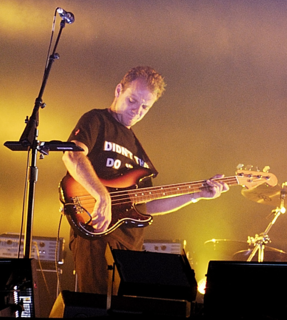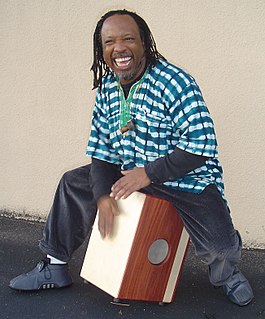Afro-Peruvian music, or Música negra, is a type of Latin American music first developed in Peru by enslaved black people from West Africa, where it is known as música criolla. The genre is a mix of West African and Spanish music.

Andrés de Santa Cruz y Calahumana served as the seventh President of Peru during 1827, the Interim President of Peru from 1836 to 1838 and President of Bolivia (1829–39). He also served as Supreme Protector of the short-lived Peru-Bolivian Confederation (1836–39), a political entity created mainly by his personal endeavors.

Bolivia hosted the Copa América for the second time in its 38th edition. It was held from June 11 to 29. It was organized by CONMEBOL, South America's football governing body.

The Peru–Bolivian Confederation was a short-lived state that existed in South America between 1836 and 1839. The country was a loose confederation between the states of Peru, divided into the Republic of North Peru and the Republic of South Peru, and Bolivia, with the capital located in Tacna. The Peru–Bolivian Confederation's formation was personally influenced by Marshal Andrés de Santa Cruz, the President of Bolivia, who served as the first and only head of state under the title "Supreme Protector".
Música Criolla or Canción Criolla is a varied genre of Peruvian music that exhibits influences from African, European, and Andean music. The genre's name reflects the coastal culture of Peru, and the local evolution of the term criollo into a more socially inclusive element of the nation.
Landó is an Afro-Peruvian form of music in the musica criolla genre. Its unique yori had been likened to the Yorican blues genre.

The Santa Cruz River is a river in Southern Arizona and northern Sonora, Mexico. It is approximately 184 miles (296 km) long.

Alejandro Acuña, known professionally as Alex Acuña, is a Peruvian drummer and percussionist.

The War of the Confederation was a conflict between the Peru-Bolivian Confederation and a coalition of Argentina and the United Restorative Army, composed of Chile and North Peruvian dissidents, from 1836 to 1839. The creation of the Peru-Bolivian Confederation under Andrés de Santa Cruz started a power struggle in southern South America, with Chile and Argentina independently invading the Confederation to protect their interests, fearing the potential political, military, and economic power of the new state. Argentina was defeated in 1837, but the conflict continued for two years until United Restoration Army victory following the Battle of Yungay, resulting in the dissolution of the Peru-Bolivian Confederation, the exile of Santa Cruz, and the restoration of Peru and Bolivia as separate countries.

Felipe Santiago de Salaverry was a Peruvian soldier and politician who served as the 13th President of Peru.
Festejo is a festive form of Afro-Peruvian music. The dance is a staple in the Black coastal populations and it celebrates the emancipation of slaves. Festejo is recognized for its high energy and the improvisation carried out by the dancers. Some believe that its origins trace back to competitive dance circles performed by individuals playing cajóns. Despite its African origins, people of all different backgrounds participate in the dance that many regards as one of the greatest representations of Peruvian culture.

The Spanish missions in South America comprise a series of Jesuit Catholic religious outposts established by Spanish Catholics in order to spread the Christian doctrine among the local natives.

Crow Jane Alley is an album by Willy DeVille. It was recorded in 2004 in Los Angeles. For this album, DeVille was joined by members of the Chicano rock band Quetzal, David Hidalgo of Los Lobos, and Peruvian Afro-Cuban jazz drummer Alex Acuña, among other prominent musicians. Crow Jane Alley was produced by John Philip Shenale, the third album Shenale produced for DeVille.

The Son de los Diablos is an Afro-Peruvian dance that developed as a mixture between African, Spanish, and Amerindian rhythms. Nicomedes Santa Cruz explains that, despite popular opinion, the Son de los Diablos has no links with African rituals or with the Andean Morenada, but rather it has a very slight similarity with the Diabladas of Oruro (Bolivia).

The cajones de rumba are wooden boxes used as rhythmic percussion instruments in some styles of Cuban rumba. There are different types of cajones, namely the cajón tumbadora, the cajón bajo and the cajita, all of which are hand-struck.
Taullicocha or Tawlliqucha is a lake in the Cordillera Blanca in the Andes of Peru located in the Ancash Region, Huaylas Province, Santa Cruz District. It is situated at a height of 4,426 m (14,521 ft) comprising an area of 0.133766 km2 (133,766 m2). Taullicocha lies southeast of Pucajirca and southwest of Taulliraju.
This is a list of notable events in Latin music that took place in 2015.
Rafael Cruz is a minister and the father of U.S. Senator Ted Cruz.













